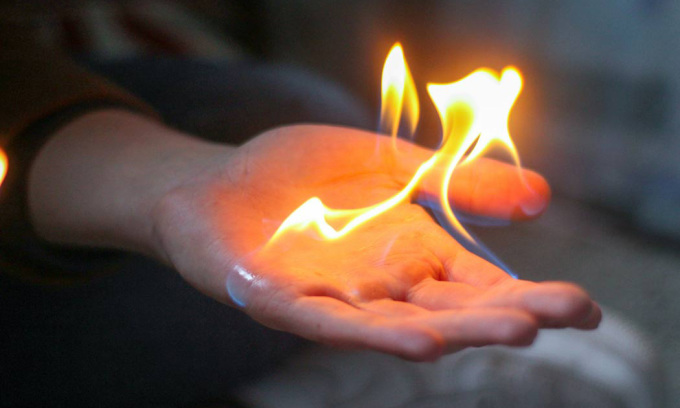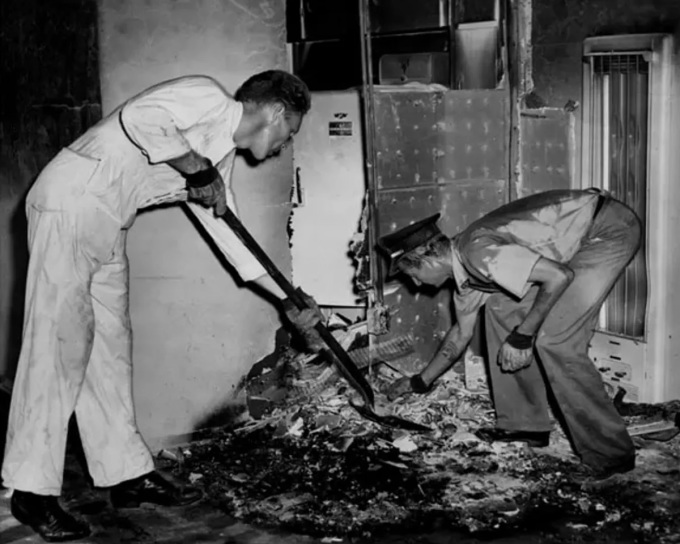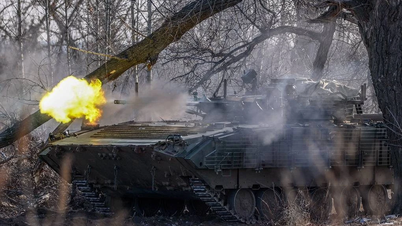Over the past 400 years, there have been hundreds of reports of the strange phenomenon known as spontaneous human combustion (SHC), causing much curiosity and speculation.

Spontaneous human combustion (SHC) is a controversial phenomenon. Photo: Lucas le coadou/EyeEm/Adobe Stock
What is spontaneous human combustion?
Spontaneous combustion occurs when an object burns without an external ignition source – the fire is caused by chemical reactions within the object. In the case of humans, this phenomenon is called spontaneous human combustion (SHC). However, SHC remains controversial and lacks a solid scientific explanation.
Cases believed to be SHC often have a few things in common: The body is destroyed while the immediate surroundings are largely intact. However, the entire body is not always reduced to ashes. In some cases, only the torso is burned, leaving the limbs unaffected.
Additionally, SHC cases often have no obvious heat source that could have started the fire. Most victims share characteristics such as being older, overweight, socially isolated, female, and having consumed large amounts of alcohol.
SHC has never been reliably witnessed. Despite the skepticism, SHC is sometimes accepted in forensic medicine and listed as a legitimate cause of death. For example, in 2011, a coroner determined that the death of a 76-year-old man in Galway, Ireland, was due to SHC.
Past cases of human spontaneous combustion
Cases of SHC have been recorded since the 17th century, with a large number occurring in the 19th century, but only a few in the last 100 years. The first case of spontaneous combustion was that of Italian knight Polonus Vorstius, as recorded by medical expert Thomas Bartholin. One evening in 1470, while resting and drinking a few glasses of wine, Vorstius suddenly vomited fire, burst into flames, and burned to death in front of his parents.
Thomas Bartholin recorded the event in his 1641 work, "Historiarum Anatomicarum Rariorum," nearly two centuries after the incident. He said he had heard the story from Vorstius' descendants. But many doubt the accuracy of the story due to the distance in time.
Several other cases followed, including those involving alcohol, leading to the hypothesis that SHC was a result of excessive alcohol consumption. In 1851, German chemist Justus von Liebig conducted a series of experiments and found that anatomical specimens preserved in 70% ethanol did not burn, nor did mice injected with ethanol, thus ruling out alcohol as the sole cause of SHC.
Alcohol cannot be blamed, many other theories have been put forward, from intestinal gas, bioelectricity, overactive mitochondria to even demons, but none of them are very scientific.

Mary Reeser died mysteriously in 1951, leaving behind a pile of ashes. Photo: Wikimedia
One of the most famous cases of SHC occurred in 1951, when widow Mary Reeser was mysteriously burned to death in her own apartment in St. Petersburg, Florida, USA. Reeser was a large woman, weighing about 77 kg, according to the St. Petersburg Times.
Her body and the armchair she had been sitting in were completely burned, leaving only her feet. The ceiling and upper walls were covered in black soot, but the furniture and walls below were untouched. Detective Cass Burgess, who investigated the case, confirmed that there was no sign of the usual combustibles such as ether, kerosene, or gasoline.
In 2009, reporter Jerry Blizin, who covered the case in 1951, revisited the case and added new details. The FBI concluded that Reeser's body fat was the fuel that started the fire. On the fateful evening, Reeser told her son that she skipped dinner to take two sleeping pills. The last time her son saw her was sitting in an armchair, smoking a cigarette.
Modern explanation
"The most likely explanation is the wick effect. For example, alcoholics who are isolated, overweight and wrapped in blankets may spill some of the alcohol they are drinking, then drop a lit cigarette - all of which lead to a slow burn," Roger Byard, a professor of Pathology at the University of Adelaide, Australia, told IFLScience on July 17.
Essentially, the wick effect requires an external ignition source that causes body fat to melt. From a tear in the skin, the fat is absorbed into clothing—which acts like a candle wick—and burns for a long time at a relatively low temperature.
A cloth wick in molten human fat has been shown to continue burning at temperatures as low as 24°C, according to Byard. This is thought to explain the limited extent of the fire, with some body parts and adjacent clothing remaining untouched. The whole process can be exacerbated by spilled alcohol on clothing, especially if the victim is a smoker.
The wick effect—which arises from an overlooked external ignition source—is now the prevailing scientific explanation for SHC cases. “SHC is definitely not real. Human combustion does occur, but not spontaneously. That’s why there are no real cases reliably observed,” Byard said.
Thu Thao (According to IFL Science )
Source link


![[Photo] Hanoi morning of October 1: Prolonged flooding, people wade to work](https://vphoto.vietnam.vn/thumb/1200x675/vietnam/resource/IMAGE/2025/10/1/189be28938e3493fa26b2938efa2059e)



































![[Photo] Panorama of the cable-stayed bridge, the final bottleneck of the Ben Luc-Long Thanh expressway](https://vphoto.vietnam.vn/thumb/1200x675/vietnam/resource/IMAGE/2025/9/30/391fdf21025541d6b2f092e49a17243f)
![[Photo] President Luong Cuong receives President of the Cuban National Assembly Esteban Lazo Hernandez](https://vphoto.vietnam.vn/thumb/1200x675/vietnam/resource/IMAGE/2025/9/30/4d38932911c24f6ea1936252bd5427fa)
![[Photo] The 1st Congress of Phu Tho Provincial Party Committee, term 2025-2030](https://vphoto.vietnam.vn/thumb/1200x675/vietnam/resource/IMAGE/2025/9/30/1507da06216649bba8a1ce6251816820)



































































Comment (0)